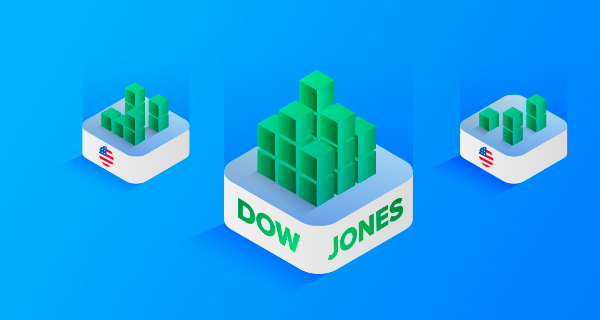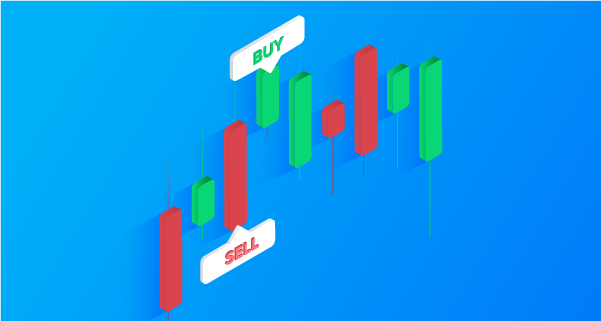What is an IPO?
An IPO or initial public offering is the process in which a private corporation decides to offer its shares to the public. This is called stock issuance. When a company goes public, it permits public investors to invest their money in the company. On the one hand, the company raises capital for further projects and investments, and on the other hand, investors get ownership of a part of the company, which gives them a right over dividends or the opportunity to sell their shares in the future. Private investors, or angel stockholders, are investors which financed the company before its decision to become public and go through its IPO.
The initial investors benefit from share premiums and the public from being able to invest in the company with hopes of making a profit.
Share premiums are essentially the difference between the issue price and the par value of a stock (actual price) that a company issues. For example, let us say that Company X issued 1000 shares. The company paid $5 for each share, spending $5’000 in total. The company then sells its shares to the public for $10. This means that Company X now has 10’000 in equity capital and the difference, which is $5’000 is called the share premium. In other words, the $5000 share premium is assets “created” by the initial, private investors. This means that company X is now worth more since, the $5’000 are inserted into Company X’s revenue reserves, leaving all parties involved satisfied.
A Brief History of IPOs
The first ”modern” IPO took place in 1602. The goal for the Dutch East India Company – which was the first company to issue shares – was to raise more capital in order to expand its operations.
The United East India Company did indeed expand their operations. In fact, many view the Dutch company as a pioneer in the financial innovation of businesses and corporations. The Company went on to be a great success and by 1663, it was operational all over Asia, Africa, and Europe. They were particularly known for their spice and gold trade. The organization had its own fleet of ships and even its own army, in order to protect themselves from theft. It could not have had all this success without the financial aid of the public, through the first IPO ever.
In 1783, The Bank of North America offered its initial public offering and was the first to trade on the New York Stock Exchange (NYSE). Soon, others followed. Today dozens of IPOs are performed every year. Going through an IPO has often been seen as a measure of ultimate success, even though many companies go public without even being profitable.
During the 2008 financial crisis, the number of IPOs drastically decreased, and the financial world saw the IPO craze practically disappear. In the following years, there was a very limited number of IPOs, until the world economy recovered again and saw yet another IPO boom.
The Creation of an IPO
A company that did not go through an IPO is called a private company. Compared to large, publicly traded companies, private entities are generally much smaller and the initial investors consist of the founders, angel investors, venture capitalists – also known as VCs – or even sometimes, friends and family members. Angels and VCs are thought of as professional investors who made a careful analysis and market studies to ensure that the companies have somewhat of a chance to become profitable once they are scaled. The rest, however, are private investors who sympathized with the idea or the team and wanted to support the company early on where a few thousands can make a difference.
Companies that are doing well and starting to consider an IPO will usually want to market themselves before going public. One way of doing this is going on a so-called “roadshow”. During a roadshow, the company starts to market itself by organizing events that usually take place in different cities of importance, considered as financial hubs. Once the company in question decides on the locations for their roadshow, they present their project and vision, tell their story, show key figures and financial measures in order to raise more capital with the hopes of achieving a higher pre-IPO valuation.
Unicorns are privately-owned companies that have a valuation of $1 billion or higher. It is important to note that a company does not necessarily need to have a valuation of a billion dollars in order to meet the requirements for an IPO listing. Even if a company is valued at $100 million, they may still apply for an IPO if they can prove that they have strong fundamentals, growth potential and can survive in a competitive environment.
Regulation authorities (SEC; ESMA; FINMA)
In the United States companies which show maturity, growth potential, and wish to go public, are faced with another challenge, which involves dealing with the Securities and Exchange Commission, more commonly known as the SEC. The SEC is known for its strict policies and its job is to make sure that market players are following the rules. They do this by vigorously inspecting public companies and other entities which are traded on the stock market.
Since the SEC is an independent federal agency, its main job is to protect investors from any illegal or dishonest attempts by banks or funds, as for example manipulating the market or providing misleading information to public investors. Once inspected and cleared by the SEC, a company increases its chances of obtaining more funding before its IPO, due to a positive SEC clearance, as it’s seen as a warrant of financial safeness.
Europe has entities similar to the SEC in order to check companies and make sure everything is legal and runs smoothly. The European Union markets are regulated by the European Securities and Market Authority (ESMA) and Switzerland is regulated by the Swiss Financial Market Supervisory Authority (FINMA).
Due diligence
Due diligence is the act of calculating the right price of a newly issued public stock, compared to its previous private par value. It is essentially an in-depth audit of a company’s financial statements, performed by professionals. The market value is the actual value of a stock or financial instrument traded on an exchange, which fluctuates based on its trading activity. If many people want to own it, it will go up, and if it is sold more than it is bought, it will go down.
Any company can produce impressive financial statements and market itself as a successful investment opportunity, claiming that its offerings are competitive and profitable, once it starts trading publicly. The question is whether the company is performing the way it portrays itself to be. Does it walk the talk? Due diligence is a practice that was undertaken in the U.S. in 1933. It obliges different entities such as fund managers, brokers, dealers as well as individual investors to “perform due diligence” on companies, in order to make sure that there is no misconduct on the part of the company in question. The act of performing due diligence is essentially investigating a company’s internal financial status in order to make sure that there are no wrongdoings. The ultimate goal is to set a price that matches the actual value of the company.
Underwriters and IPOs
Underwriters are key to an IPO’s success. When looking at the process of issuing an IPO, we can divide the procedure into two parts: first, the “pre-marketing stage” and then, the actual initial public offering stage. Underwriters consist of SEC (or ESMA, or FINMA) professionals, lawyers, certified financial accountants and are vital during the company’s IPO process. The company chooses its own underwriters (sometimes several) in order to look after and manage every detail of the IPO process. Underwriters carry out multiple tasks, from marketing to due diligence, filing, and actual issuance of stock. They take part in the whole IPO process and have an incredible amount of responsibility.
Advantages of an IPO
When going public, the aim of a company is to raise more capital in order to expand its activities. This is the typical reason for a company to go public. There are, however, other benefits of being listed on a stock exchange. When speaking of a company, many of us tend to think that all the cash comes from the company’s revenue, whether it is through the sale of a service or product. We often forget the fact that publicly traded companies can raise capital via public investments, meaning that they are able to speed up their processes and turn a higher profit in a shorter timeframe.
A publicly-traded company has its advantages when speaking of acquisition: if someone wishes to acquire the company, the entity has already a public status and a reputation, having gone through all the hurdles of becoming a public company. This means that the company can price itself much higher than a non-public company.
Stringent laws and regulations imposed on public companies oblige them to provide quarterly reports, which means that these companies are transparent and are often more eligible for loans. This can be useful, during times of adversity, perhaps after a force majeure situation, when the company has no control over what happened, but still has solid fundamentals. When everything is going well, on the other hand, it can also be a growth accelerator.
Another way to raise equity quickly would be through secondary offerings. A secondary offering is basically to list new shares for sales, after having gone through an IPO already. There are two types of secondary offerings: shares belonging to principal or major stockholder(s), which are sold in a non-dilutive offering, or new shares which are created and offered to the public. The latter, however, dilutes the company’s shares, which sometimes is not popular among shareholders.
Onboarding and retaining employees are not easy tasks. Often, in order to keep talented employees interested and motivated, the company will compensate for their work by offering them liquid stock equity in addition to their salary. This gives employees an incentive to stay with the company longer and receive compensation during the IPO when the valuation of the company is high. There can also be limits as to when the employee can sell his stocks.
IPOs can also help a company lower its cost of capital. The cost of capital is capital allocated to analyzing whether a project would be profitable for a company or not. It is essentially an investment appraisal, which considers equity and debt, which means that the company may choose if, it wants to use its’ equity or use debt to finance the evaluation of a potential project. Most companies use a combination of both equity and debt.
Finally, once a company has performed its IPO, there is a certain prestige that comes with it. This attracts investors, especially if the IPO is successful, gets a lot of exposure and publicity, and in turn could increase the company’s profits in the eyes of investors. The fact that so many people trusted and invested in the company is a great pledge of security.
Disadvantages of an IPO
Going public is very expensive. If a company does well after its IPO, there will always be ongoing costs, not to mention the costs of doing business. With time, ongoing costs will amount to more than the actual expense of going public and will increase as the company grows. There is also the risk that the funding which was expected will not be raised in the case that the market rejects the company’s proposed IPO price. It can be quite a messy situation, trust us.
There is also the risk of the company having to scrap its initial plans and strategies if shareholders get access to voting rights, which means that they could potentially control the company by being on the board of directors. Think of Steve Jobs who got fired from the company he founded.
The requirements after an IPO are very strict. Companies are expected to disclose their internal information such as accounting, tax, and other delicate information, publicly. Competitors could potentially use this information against the company disclosing its data.
The risk of legal and regulatory problems becomes more probable if the company is experiencing growth. This is all very costly and time-consuming. Problems may range from legal issues, shareholders’ actions, and regulatory issues.
Often, employees are distracted by the volatility of their company’s shares. By owning them, they wish for them to go up in price however, volatility is a normal phenomenon on the markets. Usually, employees are expected to hold on to the shares of the company for which they work, for the long haul, in turn motivating them to work better and more efficiently. However, not all people understand market volatility and may get nervous and/or sidetracked from day-to-day tasks. There are also some cases where directors will do everything in their power to maximize the share price and thus, their own profit, regardless of the soundness of their decision for the company in the long term.
There are many disadvantages that need to be balanced down against the advantages when offering an IPO, or afterward, once the company is already public. One must understand that a company does not have to go public and issue shares in order to be profitable. A company can totally function and thrive in the hands of private investors.
Investing in an IPO
When investing in an IPO, many people are either not interested in the fundamental or technical side of an IPO issuance. So much information can feel overwhelming, even for experts. This is understandable because there are so many factors that could affect an offering, not to mention the grueling amount of financial material that one must read through and understand. A lot of the time, investors follow the media, read headlines, or simply talk to others in their inner circle in order to find investment opportunities.
When a company offers its IPO, the expectation is usually that the company in question is going to grow and expand in the years to come. IPO shares are usually sold at a discounted price, in order to attract more investors. In any case, since the Company going public has created a buzz already (roadshows, publication, and other types of marketing), the public is aware of what it is about, the technicalities within the company, their business model, and so on.
In 1933, the SEC decided to create a more concise version of all financial happenings in a company. This is the so-called SEC Form S-1. This form is short and easier than reading through the technical and fundamental analyses of a company, which are hundreds of pages long and are very financially specialized. The form is a legal document which offers a dense summary of where the Company is standing financially. Essentially, the SEC Form S-1 may be used as an investment tool for early investors due to its concise nature, allowing them to make a safer decision much more quickly. An example of this form would be as follows:
“Eventbrite, Inc., a global ticketing and event tech platform, completed its IPO in September 2018, pricing 10 million shares at $23. There was an initial S-1 form filed in August, followed by five S-1/A filings. The initial filing included a proposed maximum dollar amount the company intended on raising, the underwriters, its strategies for growth, and an explanation of the dual classes of stock. It also described Eventbrite's business and historical financial information.”
The preliminary prospectus is the first document which investors may use as an investment tool. It is less dense than the S-1 Form and is released before the IPO takes place. This is the first educational tool that investors may study and then follow up with the S-1 Form If they wish to do so.
Measuring an IPOs Performance
One must keep in mind that many IPOs are overvalued. This is because a lot of the company’s budget goes towards marketing and creating hype, meaning that the stock price may be inflated. This can be seen especially when there is a “Lock-up” period. A lock-up agreement states that private shareholders may not sell their stock (or at least all of their stock) to the public for a given amount of time. Therefore, we often see a big drop in the price of shares of a company, sometime after the share issuance. In a general manner, it is risky to invest in IPOs as a private investor, as the price may show important volatility and be greatly inflated.
Sources:
https://en.wikipedia.org/wiki/Initial_public_offerin
https://en.wikipedia.org/wiki/Dutch_East_India_Company#Histor
https://en.wikipedia.org/wiki/Initial_public_offerin
https://en.wikipedia.org/wiki/Bank_of_North_Americ
https://www.investopedia.com/terms/i/ipo.as
https://www.investopedia.com/terms/i/ipo.asp#performance-of-an-initial-public-offering-ipo
https://www.investing.com/education/terms/ipo-20040890
https://www.investopedia.com/terms/s/secondaryoffering.as
https://www.investopedia.com/terms/c/costofcapital.as
https://www.investopedia.com/terms/p/preliminaryprospectus.as
https://www.investopedia.com/terms/s/sec-form-s-1.asp









